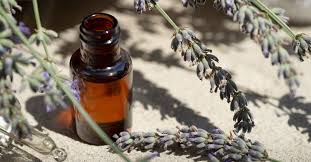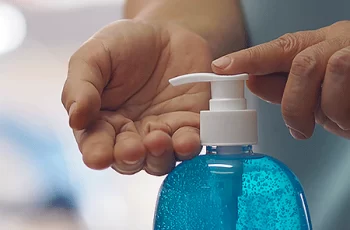
Lavender oil in skin care
Lavender (Lavandula angustifolia) has been grown and processed for its oil for centuries across the globe because it has potent antimicrobial and anti-inflammatory properties.
Today, lavender oil remains one of the most popular ingredients in skin care for more than just its soothing aroma.
It does not contain any moisturizing fatty acids, but it is rich in natural compounds which serve many functions in skin care.
This blog is all about the benefits, side effects, and uses of lavender oil in skin care. You can find out if lavender oil is right for your skin by taking the Baumann Skin Type quiz for free today!
Take the Quiz
Table of contents
Lavender oil in skin care
What is lavender oil?
What are the active compounds?
Lavender oil benefits
Is it safe?
Side-effects
Uses in skin care
Dark spots
Hair care
Acne
Infections
References
What is lavender oil
What is lavender oil?
Lavender oil is an essential oil commonly used across the skin care and fragrance industries for its pleasant aroma and antimicrobial benefits.
It is loved by many sensitive skin types and is considered one of the mildest known essential oils. (5)
It contains no fats, which means it is not technically a “true oil.”
It is extracted from lavender flowers grown primarily in France, but with various species naturally present across the Mediterranean and the globe.
It has a thin, almost watery texture and can be found in dozens of products from soaps to sunscreens. Here are a few of my favorite products with lavender oil:
What are the active compounds?
The most significant active compound in lavender oil is the anti-inflammatory, antioxidant, antimicrobial terpene called linalool. (6,53)
Linalool is a compound derived from linalyl acetate, which is even more common in lavender oil than linalool, but less active. (4,5,17,18)
There is no notable fatty acid content in lavender oil.
Lavender oil is composed of many different natural plant compounds like:
Tannins
Coumarins
Flavonoids
Triterpenoids
And compounds which are highly prized in essential oils such as:
Sesquiterpenoid alcohols
Esters
Ketones
Oxides
benefits of lavender oil
Lavender oil benefits
The active compounds in lavender contribute to an oil with great antimicrobial, antioxidant, anti-inflammatory, and skin-lightening capabilities.
It is commonly used to perfume skin care products because it has such a desirable fragrance.
As an antioxidant, it is good at treating sun damage by binding free radicals on the skin. (53)
It has been found to treat many kinds of skin infections, inflammation conditions, and even hair loss concerns. (8,22)
Studies have found that lavender and tea tree oil are both effective at eliminating head lice. (23)
In humans and many other animal species, lavender has been shown to work well as a sedative when inhaled (3), and even as a decent short term pain-killer after surgeries.(25)
Is it safe?
Topically applied lavender oil is considered safe besides the chances of having an allergic reaction.
Most resources including the EWG consider lavender oil safe, with the EWG rating being “2,” with only allergens and oral ingestion being considered as concerns.
Lavender is not recommended for use orally while pregnant because of some cytotoxicity claims.
Outside of these concerns, it is still a well regarded anti-inflammatory, antimicrobial, and antioxidant used in many skin care products.
There are also no signs that lavender interacts with other drugs in the body. (7)
Side-effects
Some studies support the claim that lavender oil should not be consumed orally (7) because some research has suggested that lavender oil has cytotoxic effects when consumed orally. (5)
That being said, it has not been demonstrated that lavender oil is dangerous in topical cosmetic products or aromatherapeutic purposes.
If you have extremely dry skin, lavender oil can contribute to skin dehydration because it does not contain hydrating fatty acids.
Allergic reactions are fairly common to detergents or air fresheners made with lavender oil. (31)
As lavender oil sits out in the air, it oxidizes which makes it into a more potent allergen. (33,34) For this reason, older products are more likely to cause an allergic reaction than newly opened lavender products.
Allergic reactions to lavender can include itchiness, redness, and other kinds of mild inflammation.
These same studies also found that the two primary compounds in lavender oil, linalool and linalyl acetate, are usually not the compounds that trigger an allergy.
This means that products containing linalool or linalyl acetate are less likely to be allergenic than plain lavender oil. (5,33)
side-effects of lavender oil
Uses in skin care
Lavender oil can be found in many kinds of skin care products such as bath gels, conditioners, shampoos, lip balms, sunscreens, moisturizers, and dark spot treatments, to name a few.
Because it lacks hydrating fatty acids, it is not great for dry skin types or conditions.
Shop by your Baumann Skin Type to make sure you only buy the right products for your skin!
Take the Quiz
Dark spots
Some evidence suggests that lavender oil is a weak tyrosinase inhibitor, meaning it helps stop the production of melanin. (52)
It is a natural way to treat skin hyperpigmentation. However, like other natural skin lightening compounds, lavender oil is only really effective in combination with other skin lightening ingredients like PAR-2 blockers or other tyrosinase inhibitors.
Some of the most common skin lightening ingredients that can be used with lavender to lighten skin are:
Arbutin
Cysteamine
Hexylresorcinol
Kojic acid
Licorice extract
Niacinamide
Resorcinol
Hair care
Lavender oil contains significant antioxidant properties through its various active compounds. (53)
Antioxidants are important for hair care because they help protect your hair from sun damage and eliminate free radicals on your scalp and follicles.
It is a super common additive in many hair care products like shampoos because it doesn’t contain oils and eliminates bacteria.
Acne
Lavender oil contains no fatty acids and is not comedogenic, meaning it does not cause clogged pores.
It might be used in combination with ingredients like retinoids or other acne treating compounds like salicylic acid, depending on your custom skin care regimen.
It also contains potent antibacterial properties through its active compounds like linalool which eliminate acne causing bacteria.
Lavender has a relaxing effect and reduces stress; stress can worsen acne.
If you are not allergic to lavender oil, it can be a great addition to your acne treatment routine.
Infections
Many kinds of skin infections from bacterial to fungal can be treated with different products containing lavender oil. It is often combined with tea tree oil to naturally treat infections on the skin.
Lavender oil can be found in many disinfectant creams for its antimicrobial benefits which have been shown to treat conditions like staph infections. (8)
If you have a bacterial or fungal skin infection, the products you use might already contain lavender oil!


